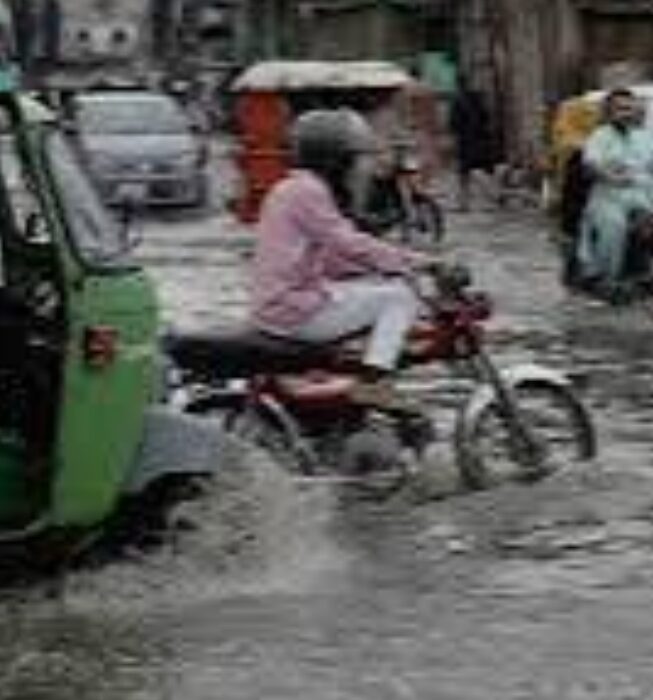54 Die Within 24 Hours of Intense Monsoon in Pakistan

Relentless downpours have resulted in 54 fatalities over the past 24 hours in Pakistan, elevating the death toll to approximately 180 since the monsoon’s commencement in late June, the government’s disaster agency announced on Thursday.
The ceaseless rain has deluged parts of Punjab province since Wednesday morning, provoking urban inundation and the collapse of residential structures.
Rescue squads employed boats to extricate families from villages along the river in the southern regions during the morning, though the waters began to ebb by afternoon.
“Children cried out for assistance, and women stood on rooftops, waving their shawls and imploring for help,” recounted Tariq Mehbood Bhatti, a 51-year-old agriculturist from Ladian village.
Inhabitants of low-lying districts adjacent to the Nullah Lai river that traverses Rawalpindi city, neighboring the capital Islamabad, were instructed to evacuate following a precipitous rise in water levels.
“Rescue units are poised for additional evacuations,” a spokeswoman for the disaster agency stated.
“Residents in susceptible areas should assemble emergency kits comprising sustenance, water, and crucial medications sufficient for three to five days in anticipation of a crisis,” the National Disaster Management Authority (NDMA) advised in a bulletin.
The Rawalpindi administration declared a public holiday on Thursday to ensure residents remain indoors, with the national meteorological department cautioning that the heavy rainfall would persist until Friday.
Approximately 180 individuals, including 70 children, have perished, and around 500 have sustained injuries since the monsoon began on June 26, according to the disaster agency.
“In the preceding 24 hours, 54 individuals have succumbed, and 227 have been injured throughout Pakistan, with the majority of fatalities reported in Punjab,” the NDMA spokeswoman informed AFP, noting the figures were tallied at 8:00 am (0300 GMT) on Thursday.
The predominant causes of death were collapsing structures and abrupt flash floods, while numerous individuals suffered electrocution.
The monsoon season accounts for 70 to 80 percent of South Asia’s annual precipitation, spanning from June to September in India and Pakistan.
These annual rains are indispensable for agriculture, food security, and the livelihoods of millions of farmers, albeit they also bring devastation.
South Asia is experiencing escalating temperatures and altered climatic patterns in recent years, though scientists are yet to ascertain precisely how a warming planet impacts the intricate monsoon systems.
Pakistan ranks among the world’s most susceptible nations to climate change repercussions, with its 255 million inhabitants confronting increasingly frequent extreme weather phenomena.
In 2022, monsoon floods submerged one-third of the nation, claiming 1,700 lives.








